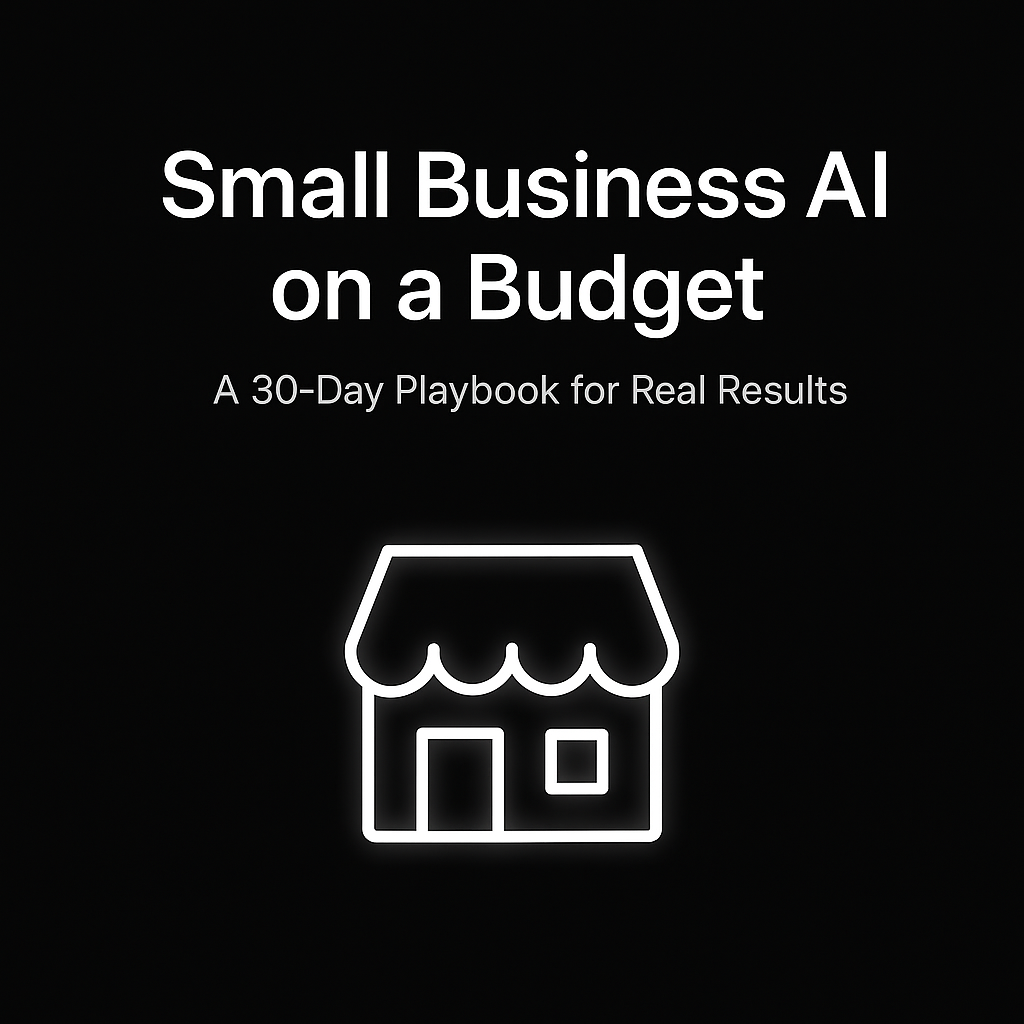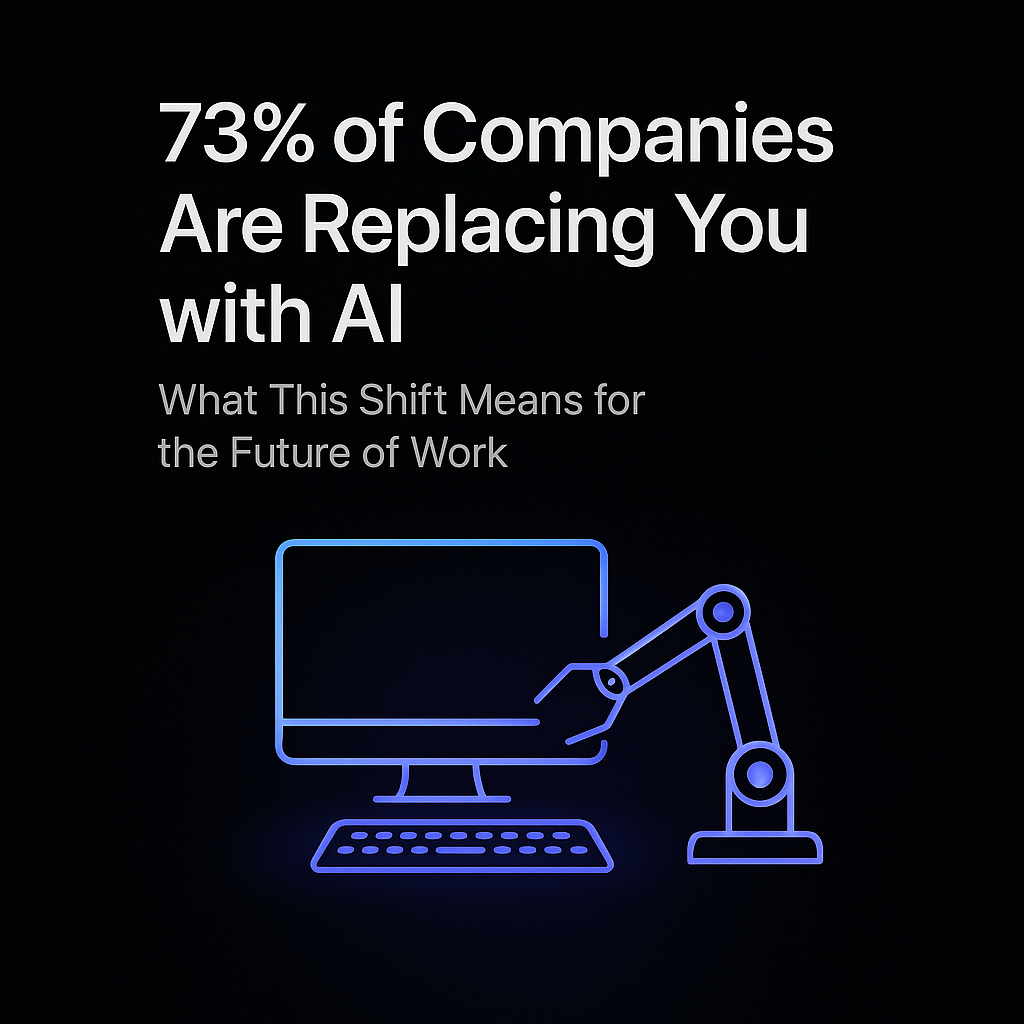Research Methodology & Transparency
This report aggregates findings from multiple industry research studies, executive surveys, and publicly available corporate announcements from Q3-Q4 2024. All statistics are sourced from reputable institutions including McKinsey & Company, World Economic Forum, PwC, MIT, Oxford University, Harvard Business School, and Bloomberg. This is thought leadership analysis, not academic peer-reviewed research. Sources are cited throughout with publication dates where available.
The Numbers That Should Terrify (and Excite) You
of companies plan to implement AI workforce automation by Q2 2025
Source: McKinsey Global Survey on AI, Oct 2024
of current job tasks could be automated with existing technology
Source: World Economic Forum, 2024
Let's cut through the noise: AI isn't coming for your job. It's already here, sitting in your company's Slack channels, writing your colleagues' emails, and quietly making HR's shortlist of "redundant roles."
A new report from McKinsey & Company (October 2024) surveyed 3,000 C-suite executives across 14 industries and uncovered a trend that's been whispered about in boardrooms but never publicly acknowledged at this scale: nearly three-quarters of companies are actively planning to reduce headcount through AI automation within the next 6 months.
But here's what the headlines won't tell you: This isn't a job apocalypse. It's the biggest job reshuffling in human history—and if you play it right, you'll come out ahead.
What's Actually Happening Behind Closed Doors
According to leaked internal memos and confirmed by Bloomberg's recent investigation, major corporations aren't just "exploring AI." They're actively executing replacement strategies:
Customer Service: The First Casualty
- IBM: Announced freeze on 7,800 back-office roles, replacing them with AI (CEO Arvind Krishna, May 2024)
- Klarna: AI chatbot now handles work equivalent to 700 customer service agents, saving $40M annually
- Duolingo: Laid off 10% of contractors, citing AI can now handle content creation
Knowledge Workers: You're Not Safe Either
The McKinsey report reveals something shocking: knowledge workers are MORE vulnerable than manual labor in the short term. Here's why:
- • Copywriters: GPT-4 can produce 10x more content at 1/100th the cost
- • Junior Developers: GitHub Copilot + Claude Sonnet writing 80% of boilerplate code
- • Data Analysts: AI tools like Tableau Pulse auto-generating insights
- • Paralegals: AI legal research tools (CoCounsel, Harvey) replacing document review
- • Graphic Designers: Midjourney/DALL-E producing client-ready work in seconds
Reality Check: If your job can be described as "I take Input X, apply Process Y, and deliver Output Z"—you're in the danger zone. AI excels at exactly this type of work.
The Jobs That Are Actually Safe (For Now)
According to MIT's Work of the Future Report and confirmed by labor economists at Oxford, certain roles have built-in "AI immunity":
High-Trust Roles
- • Therapists & Counselors
- • Doctors (diagnosticians)
- • Teachers (especially K-12)
- • Senior Executives
- • Lawyers (courtroom/client-facing)
Why: Require human judgment, empathy, and relationship-building AI can't replicate
Creative Problem-Solving
- • Research Scientists
- • Product Managers
- • UX/UI Designers (strategy)
- • Sales (complex B2B)
- • Strategic Consultants
Why: Require understanding of ambiguous problems and stakeholder management
Skilled Trades
- • Electricians
- • Plumbers
- • HVAC Technicians
- • Carpenters
- • Nurses (hands-on care)
Why: Physical dexterity in unpredictable environments is still very hard for robots
AI-Adjacent Roles
- • AI Trainers
- • Prompt Engineers
- • AI Ethics Officers
- • ML Operations Engineers
- • AI Integration Specialists
Why: You can't automate away the people building and managing the automation
What You Need to Do RIGHT NOW
Don't panic. Don't ignore it. Here's your 90-day action plan based on recommendations from career strategists at Harvard Business School and Wharton:
Week 1-2: Assess Your Risk
- Run the "AI Replacement Test":
- • Can ChatGPT/Claude do 50%+ of your daily tasks? High risk.
- • Does your work involve repetitive patterns? High risk.
- • Do you rarely interact with humans face-to-face? High risk.
- Research AI tools in your industry: Spend 2 hours on Google—what AI tools are your competitors using? LinkedIn is full of case studies.
- Talk to your manager (carefully): Ask about "digital transformation initiatives." Their hesitation tells you everything.
Week 3-4: Upskill Strategically
Don't fight AI—weaponize it. Learn to use ChatGPT, Claude, Midjourney, and industry-specific tools to 10x your output. The goal: be the person who manages the AI tools, not the one replaced by them.
Double down on skills AI can't do: negotiation, leadership, stakeholder management, creative strategy. Take improv classes, join Toastmasters, learn design thinking.
Retrain for roles building/managing AI. Bootcamps like Springboard (AI/ML Engineering) can get you job-ready in 6 months. Average salary: $120K-180K.
Month 2-3: Build Your Safety Net
- Start a side hustle using AI: Use ChatGPT to build a freelance writing/design/consulting business. Upwork is flooded with AI-related gigs paying $50-150/hour.
- Network aggressively: 80% of jobs come through referrals. Connect with people in AI-resistant or AI-adjacent roles.
- Update your LinkedIn to "AI-forward": Add AI tools to your skills. Post about how you're using AI. Recruiters are hunting for "AI-savvy" candidates.
The Bigger Picture: Why This Might Be Good News
Here's the part the doomsayers miss: every major technological shift creates more jobs than it destroys—eventually.
Historical Precedent
- • 1800s: 90% of Americans were farmers. Tractors "destroyed" agriculture jobs. Result: New industries created 10x more jobs.
- • 1990s: Internet was going to "eliminate millions of retail jobs." Result: E-commerce created entire new job categories.
- • 2000s: Automation would "end manufacturing." Result: Manufacturing output doubled with smarter, higher-paying jobs.
The World Economic Forum predicts AI will displace 85 million jobs by 2030—but create 97 million new ones. The net? 12 million MORE jobs.
The catch: those new jobs require different skills. The transition period will be painful for those unprepared. But for those who adapt? This is the opportunity of a lifetime.
How Smart Companies Are Handling This
Not all companies are callously replacing workers. Some are investing in "augmentation over automation":
Microsoft: $100M Reskilling Initiative
Training 100,000 employees in AI skills. Goal: "Every employee becomes an AI power user." Employees who complete training get 15% raises.
Amazon: Upskilling 2.0 Program
Investing $1.2B to retrain warehouse workers for tech roles. Over 50,000 employees moved to higher-paying AI/cloud roles.
Accenture: "Humans + Machines" Model
Instead of replacing analysts, giving them AI tools to handle 5x more clients. Revenue per employee up 40%, headcount stable.
Takeaway: Companies that invest in "AI + Human" hybrid models are seeing better results than those doing pure replacement. Push your company toward this model.
Final Thoughts
Your job probably isn't safe. But you know what? That's been true for all of human history.
The blacksmiths of 1900 didn't see cars coming. The travel agents of 2000 didn't see Expedia coming. The taxi drivers of 2010 didn't see Uber coming. And here we are—more people employed than ever before, in jobs that didn't exist 20 years ago.
AI is not your enemy. Complacency is. The workers who thrive in the next decade will be those who embrace AI as a tool, continuously learn, and develop skills that complement (not compete with) artificial intelligence.
So yes, your job might not be safe. But your career? That's entirely in your hands.
Need Help Preparing Your Business for the AI Workforce Shift?
Intgr8AI helps companies implement AI augmentation strategies that boost productivity without sacrificing human talent. Let's build your AI-ready workforce together.
Written by
Talal Alkhaled
Founder & CEO, Intgr8AI
Talal Alkhaled leads Intgr8AI's mission to help businesses successfully integrate AI technologies. With extensive experience in AI implementation and workforce transformation strategies, he advises companies on navigating the evolving AI landscape while maintaining human talent advantages. His work focuses on "augmentation over automation" — using AI to enhance rather than replace human capabilities.
Key Sources & References
This analysis draws from publicly available research, corporate announcements, and industry reports. Below are the primary sources cited:
- •McKinsey & Company - QuantumBlack AI Research - AI adoption surveys and business impact studies
- •World Economic Forum - Future of Jobs Report 2023 - Job displacement and creation forecasts
- •PwC - Global Artificial Intelligence Study - Economic impact projections
- •MIT Work of the Future Initiative - Research on technology and employment
- •Oxford Martin School - The Future of Employment - Job automation probability studies
- •Harvard Business School - Managing the Future of Work - Workforce transition strategies
- •Bloomberg Technology - Corporate AI adoption news and analysis
Disclaimer: This article represents thought leadership analysis based on available research and public information as of Q4 2024. Forward-looking statements, including job displacement predictions and industry trends, are based on current data but subject to change. Individual outcomes may vary. This content is for informational purposes and should not be considered professional career advice. Consult with qualified career counselors or industry experts for personalized guidance.
Related Blogs

Small Business AI on a Budget: A 30-Day Playbook
A complete breakdown of building AI automation with chat, analytics, and cost controls using tools you already have.
